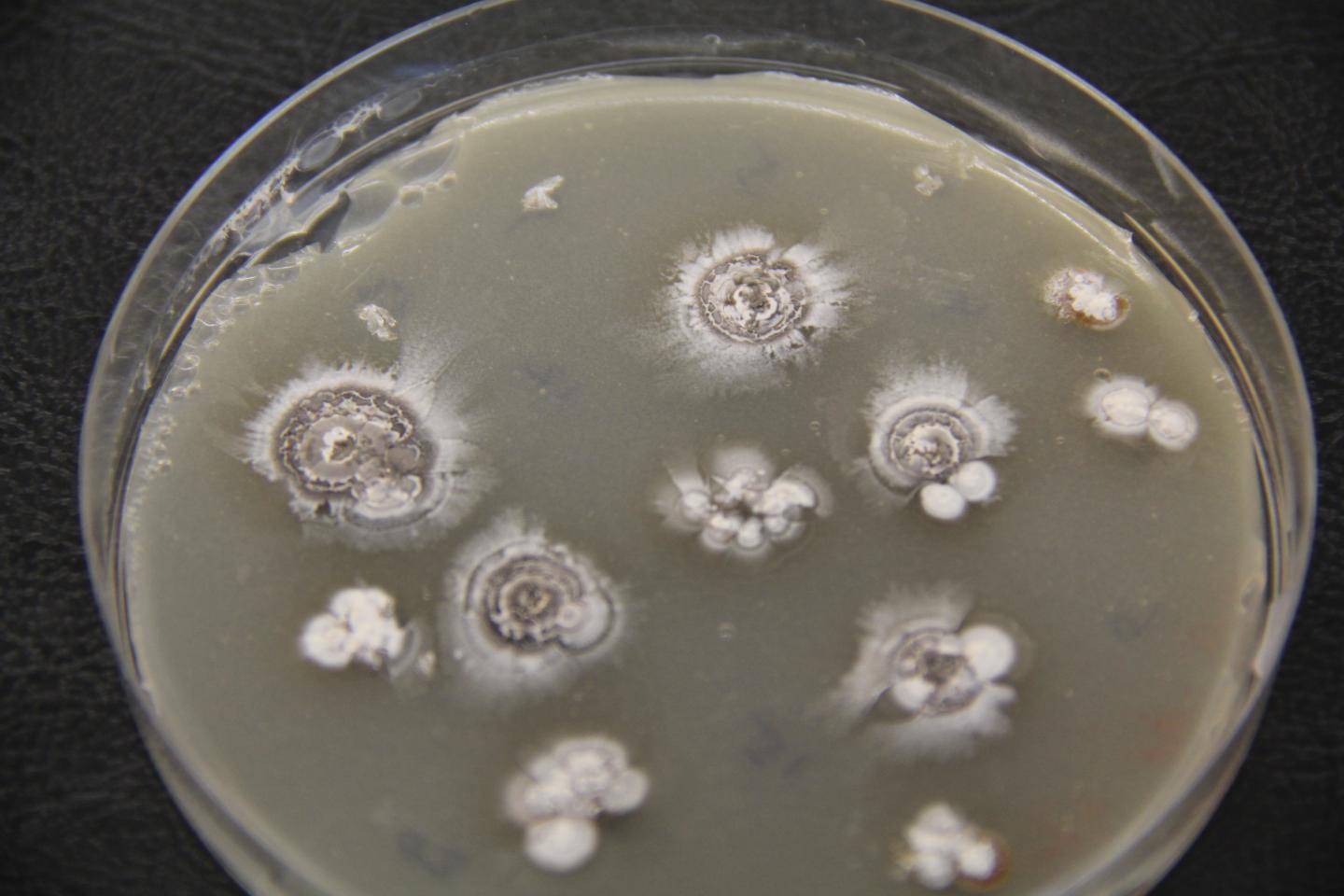
This is a culture of a thiocarboxylic acid producing strain of bacteria. Credit: Shen Lab / The Scripps Research Institute
Natural products made by organisms such as soil-dwelling bacteria may be the key to breakthroughs in drug design.
Researchers from the Scripps Research Institute have found that bacteria-derived molecules called thiocarboxylic acids could be useful as ingredients for the next generation of antibiotics.
“We use natural products as an inspiration for chemistry, biology and drug discovery,” Ben Shen, PhD, professor and co-chair of the Department of Chemistry at Scripps Research, said in a statement.
Thiocarboxylic acids are similar to lab-made molecules called carboxylic acids. Scientists labeled carboxylic acids as good “warheads” because they can hone in on biological targets. This unique ability makes them a candidate for many antibiotics and medications.
The researchers examined platensimycin and platencin, a pair of natural products that have been extensively investigated in the past as possible ingredients for antibiotics. The team found that the two products—which have been known for over a decade to be carboxylic acids—are actually made by bacteria as thiocarboxylic acids. The researchers also found the exact genes and the enzymes they encode that bacteria use to create thiocarboxylic acids.
Next, the team tested whether nature-made thiocarboxylic acids could also act as biological warheads and found that, as antibiotics, platensimycin and platencin thiocarboxylic acids bind to their biological targets even better than their carboxylic acid counterparts do.
“That was exciting to see,” Shen said. “We’ve now identified thiocarboxylic acids as natural products that can be used as drugs, and thiocarboxylic acids as warheads should be applicable to man-made drugs as well.”
While scientists in the past though that the thiocarboxylic acid molecules were rare, the researchers now know these products are commonly made in nature. After searching databases of bacterial genomes, the researchers found that many species of bacteria around the world have the genes to produce thiocarboxylic acids.
“There are many, many thiocarboxylic acid natural products waiting to be discovered, making them a treasure trove of potential new drug leads or drugs,” Shen said.
The study was published in Nature Communications.
Filed Under: Drug Discovery



